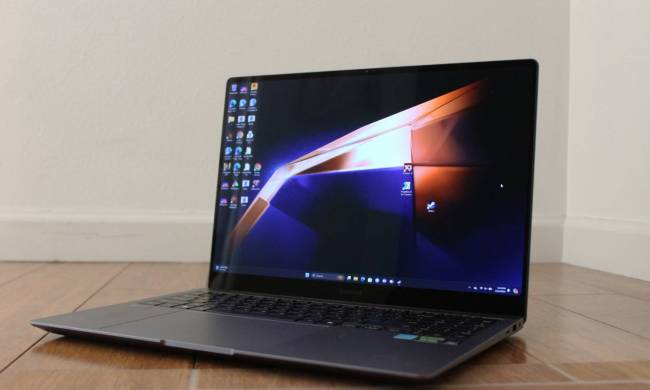
There’s a revolution in the making. Those of us who’ve been watching closely know that Qualcomm’s Snapdragon X Elite chips are rumored to be just around the corner. And they’re about to ignite a bomb in the world of Windows laptops.
That might sound like exaggeration at first blush. But Qualcomm has spent the better part of this year trotting around a demo unit with this chip, and the performance so far looks pretty astounding. Not only is Qualcomm claiming that its new chips will run circles around Intel’s latest Core Ultra chips — but it’s even pitting them against Apple’s M3. That’s right. There’s even a significant jump in AI performance via the chip’s neural processing unit (NPU).
If the Snapdragon X Elite chips are really as good as Qualcomm says, this could be as big of a jump as the M1 was for the MacBook Air.
That means we could soon be getting Windows laptops that are as efficient, powerful, and long-lasting as Apple’s MacBooks. That’s a big deal. Right now, even the best of Windows alternatives struggle to keep up with something like the M3 MacBook Air. Not only does raw performance fall short of the M3, but they’re not nearly as efficient. They alsoproduce a lot more heat and drain battery life like nobody’s business. And just to be clear: This is not a small gap to close.
Right now, the MacBook Air lasts over twice as long as its Windows competitors, despite being close in price. The MacBook Air is completely fanless too. My point? If these upcoming Snapdragon Elite X chip laptops are really as good as we’ve heard, they will be a major upgrade over the current crop of even the best Windows laptops.
Yoga Slim 7 14(.5) 2024 Snapdragon Edition pic.twitter.com/k29LupeWk6
— WalkingCat (@_h0x0d_) April 17, 2024
It seems as if there will be lots of options too. Every major laptop manufacturer has signed up, including Dell, HP, Lenovo, Asus, Microsoft, and more. Rumors say the new Surface Pro 10 and Surface Laptop 6 will exclusively adopt the new chips, and some leaks have already revealed some of the new designs. It has not been announced when these other devices will roll out, but we know at least the Surface devices will likely be announced on May 20, the day before Microsoft Build.
Of course, I’m not saying that this first wave of Snapdragon X Elite laptops will necessarily be worth buying over their Intel counterparts. There’s a lot we don’t know, even beyond whether they live up to the performance and battery life claims. For example, Windows has a long, storied history of failing to properly support ARM chips, and although things have improved, we’ll have to wait to see how committed Microsoft and Windows developers really are.
There’s also the question of price. We don’t know how laptop manufacturers will price these new laptops, especially if they are being marketed as proper MacBook competitors.
However, I do know that if you’re in the market for a premium Windows laptop right now, it’s worth holding off to see how it plays out. We may be on the verge of a major turning point for Windows laptops — one that could make you quickly regret buying a laptop right now.


